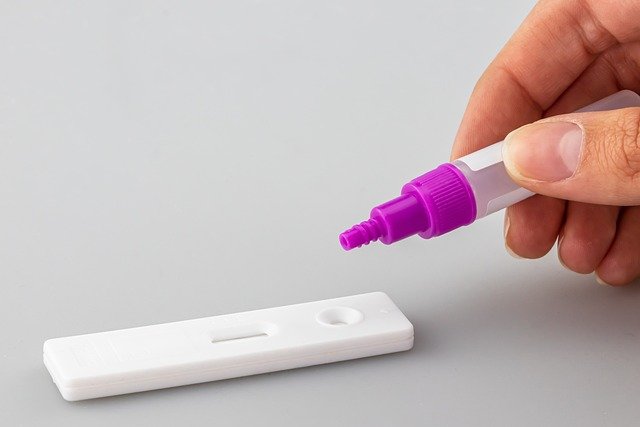Medical Assistant Training Programs Available Across United States
Residents of United States can consider medical assistant training as a pathway into a vibrant healthcare sector. This training does not necessitate prior experience or specialized education, making it accessible for many individuals. The programs focus on equipping participants with essential skills needed to succeed in various medical settings.

The healthcare sector offers numerous opportunities for individuals seeking stable, meaningful careers, and medical assisting stands out as one of the most accessible entry points into this field. These professionals work directly with patients and healthcare providers, making them essential team members in delivering quality medical care.
Understanding the Role of a Medical Assistant in United States
Medical assistants perform both clinical and administrative duties in healthcare settings. Their clinical responsibilities include taking vital signs, preparing patients for examinations, assisting physicians during procedures, and collecting laboratory specimens. On the administrative side, they manage patient records, schedule appointments, handle insurance verification, and coordinate communication between patients and healthcare providers. This dual role makes medical assistants valuable assets to medical practices, as they can seamlessly transition between front-office and back-office responsibilities depending on the facility’s needs.
The scope of practice varies by state, with some allowing medical assistants to perform additional procedures such as administering medications or conducting basic laboratory tests under physician supervision. This variation in responsibilities creates diverse career opportunities across different regions and healthcare specialties.
Training Requirements and Program Structure for Aspiring Medical Assistants
Most medical assistant positions require completion of a formal training program, though some employers may provide on-the-job training for entry-level positions. Accredited programs typically last between nine months to two years, depending on whether students pursue a certificate, diploma, or associate degree. These programs combine classroom instruction with hands-on clinical experience through externships or practicum placements.
The curriculum covers essential topics including medical terminology, anatomy and physiology, medical office procedures, electronic health records, pharmacology basics, and clinical skills such as phlebotomy and electrocardiography. Many programs also include training in medical coding, billing procedures, and healthcare regulations to prepare students for administrative responsibilities.
Accreditation plays a crucial role in program quality and graduate employability. The Commission on Accreditation of Allied Health Education Programs (CAAHEP) and the Accrediting Bureau of Health Education Schools (ABHES) are the primary accrediting bodies for medical assistant programs. Graduates from accredited programs are eligible to sit for national certification examinations.
Career Pathways and Growth Potential in the Medical Field
Medical assisting serves as an excellent stepping stone for advancement within healthcare. Many medical assistants pursue specialized certifications in areas such as phlebotomy, EKG technology, or medical coding to enhance their skills and earning potential. Others use their experience as a foundation for pursuing higher-level healthcare careers, including nursing, healthcare administration, or specialized clinical roles.
The Bureau of Labor Statistics projects employment of medical assistants to grow much faster than the average for all occupations, with a projected growth rate of 18% from 2022 to 2032. This growth is driven by an aging population requiring more medical services and the increasing use of medical assistants to handle routine tasks, allowing physicians to see more patients.
Specialization opportunities exist in various medical fields, including cardiology, dermatology, orthopedics, and pediatrics. Each specialty may require additional training or certification, but offers the potential for higher compensation and more focused career development.
| Program Type | Duration | Cost Range | Certification Eligibility |
|---|---|---|---|
| Certificate Programs | 9-12 months | $3,000-$15,000 | Yes |
| Diploma Programs | 12-18 months | $8,000-$20,000 | Yes |
| Associate Degree | 18-24 months | $15,000-$35,000 | Yes |
| Online Programs | 6-18 months | $2,000-$12,000 | Varies |
Prices, rates, or cost estimates mentioned in this article are based on the latest available information but may change over time. Independent research is advised before making financial decisions.
Training programs are available through various educational institutions, including community colleges, vocational schools, and private career colleges. Community colleges often offer the most affordable options, while private institutions may provide more flexible scheduling or accelerated programs. Online programs have become increasingly popular, offering convenience for working adults, though they typically require students to arrange their own clinical experience locally.
Financial aid options are available for most programs, including federal grants, loans, and scholarships specifically for healthcare students. Many employers also offer tuition reimbursement programs for current employees seeking to advance their careers through medical assistant training.
The combination of strong job growth projections, relatively short training periods, and diverse career opportunities makes medical assistant training an attractive option for individuals seeking to enter the healthcare field quickly. With programs available nationwide and various formats to accommodate different learning preferences and schedules, aspiring medical assistants have numerous pathways to achieve their career goals.
This article is for informational purposes only and should not be considered medical advice. Please consult a qualified healthcare professional for personalized guidance and treatment.




